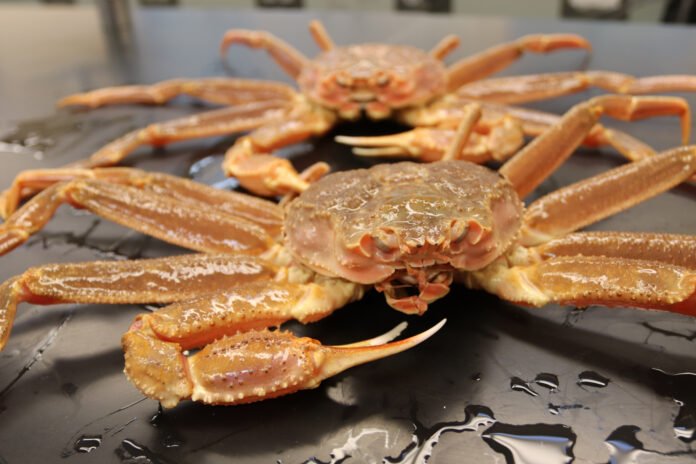The Alaska Snow crabs harvest has been cancelled for the first time after billions of crustaceans have mysteriously disappeared from the cold, treacherous waters of the Bering Sea in recent years. The Alaska Board of Fisheries and North Pacific Fishery Management Council announced last week that the population of Snow crabs in the Bering Sea had fallen below the regulatory threshold to open up the fishery. But the actual numbers behind that decision are not ordinary but shocking in a true sense.
Shocking decline in numbers
The Snow crabs population shrank with a speed of light from around 8 billion in 2018 to 1 billion in 2021, according to Benjamin Daly, a researcher with the Alaska Department of Fish and Game. Snow crabs are by some distance the most abundant of all the Bering Sea crab species that are caught commercially, so the shock and awe of many billions missing from the population are stocking according to the agencies, the Bristol Bay red king crab harvest will also be closed for the second year in a row.
Speculated cause
Officials cited overfishing as their reason for cancelling the seasons. Mark Richert, the groundfish and shellfish fisheries management coordinator with the state’s fish and game department, said that more crabs were being fished out of the oceans during harvest and other times than could be naturally replaced. So if we go by the theory then there were more removals from the population than there were input. Between the surveys conducted in 2021 and 2022, the mature male Snow crabs population declined by about 40%, with an estimated 45 million pounds left in the entire Bering Sea. As you can see the number is scary and alarming.
Climate Change the real criminal
Calling the Bering Sea crab population overfished as a technical definition that triggers conservation measures – says nothing about the actual cause of its collapse. It’s for sure that overfishing can cause such a brisk decline in their population. Human-caused climate change is deemed to be a significant factor in the crabs’ alarming disappearance. According to studies Snow crabs are cold-water species and are found overwhelmingly in areas where water temperatures are below 2 degrees Celsius. As oceans warm and sea ice disappears due to global warming, the ocean around Alaska is becoming inhospitable for the species. Studies that have looked at specific temperatures in the Bering Sea or Bering Sea ice cover in 2018, they’ve concluded that those temperatures and low-ice conditions in the Bering sea are a consequence of global warming.
Temperatures around the Arctic have warmed around four times faster as compared to the rest of the planet, scientists have reported. Climate change has caused a rapid loss in sea ice in the Arctic region, particularly in Alaska’s Bering Sea, which in turn has amplified global warming. Closing the fisheries due to low abundance and continuing research are among the primary efforts to restore the populations at this point there is always optimism for the future as a few, small juvenile Snow crabs are starting to appear in the system. But it could take at least three to four more years before they hit maturity and contribute to the regrowth.













